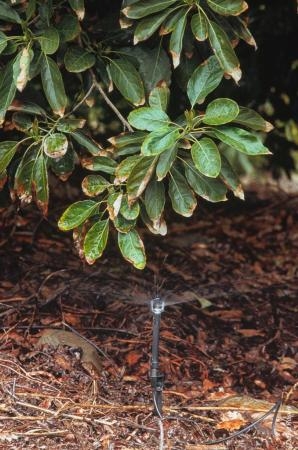So after five years of drought a grower told me he finally gets it. Farming avocados in Goleta with limited well water and poor quality and expensive, rationed delivery, he has finally cut out trees that were not performing well. These were wind sept trees, areas with root and crown rot. Tree were either stumped or removed altogether. The idea is to focus on those trees that are productive, and are they ever. They are getting the water they need and their schedule has been changed. Previously irrigation had been on a fixed schedule of 2 weeks and got 24 hours per set. The schedule was dictated by the time it took to get around to all 300 acres. Now trees are irrigated one to two times per week with shorter sets, from 5-8 hours depending on the time it takes to get 18 inches of penetration in sandy ground. Yields per acre have significantly increased, largely because non-productive areas have been eliminated and the remaining trees are getting what they need.
He is also anticipating irrigation needs – projecting a schedule.
The driving forces for water loss in avocados in decreasing effect are sunlight (day length, cloud cover), wind, humidity, and temperature. More light, more transpiration. More wind, more water loss, lower humidity, more water loss. And least of all if temperature which is what we normally respond to, but which the tree responds the least. Usually, though the most desiccating conditions occur during periods of high, dry winds that blow out of the Great Basin – the dread Santa Anas or in the case of Santa Barbara the Sundowners. When they start blowing, it's hard to play catchup. It takes a while for water to infiltrate and for the roots to start taking it up and filling all the drained leaves and stems. Now the grower more carefully watches the forecasts and makes sure to get water on before the high demand conditions arrive. With multiple blocks he wants to get all of them wetted to a normal irrigation depth and then it's time to start the cycle over again. He keep an eye on the nearest CIMIS station to see how much the water demand is increasing and adjusts the irrigation frequency. Importantly, h keep your eye on how fast the soil in the root zone is drying out and then makes even smaller and more frequent applications.
When it comes to making the water meet the needs of the trees, he is really customizing each irrigation.
Attached Images:
